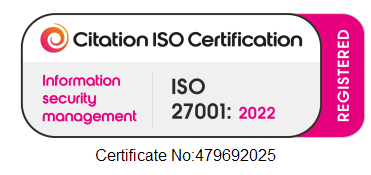In this episode of SEOs Getting Coffee, Emina hosts Dana DiTomaso, founder and lead instructor at KickPoint Playbook. Together, they dive into one of the trickiest aspects of SEO: reporting to the C-suite.
If you’ve ever struggled to translate your SEO successes into a language that resonates with top executives, this episode is a must-listen. Here’s a breakdown of their insightful conversation.
Watch Video
SEO Reporting & C-Suite Communication | SEOs Getting Coffee #Episode 29
The Struggle: Reporting to the C-Suite
One of the major points Dana emphasises is the difficulty SEOs face when reporting to higher-ups. Many SEOs are great at driving traffic but struggle to prove the real-world value of their efforts. According to Dana, focusing on rankings alone isn’t enough—“Rankings don’t pay the bills.”
Executives need to see how your SEO efforts tie back to business objectives, whether that’s increased revenue, leads, or another key performance indicator (KPI).
Aligning SEO with Business Goals
Dana stresses that successful C-suite reporting starts with aligning your SEO metrics with the overall business strategy. If your company has a “North Star” metric—such as revenue, conversions, or customer lifetime value—your SEO reports should show how SEO impacts that. If the company doesn’t have a clear North Star, find out what’s most important to them and align your efforts accordingly.
Filtering Out Irrelevant Data
A big takeaway from Dana is the importance of filtering out irrelevant data. While many SEOs might want to showcase all the traffic their efforts have generated, it’s not always relevant.
For example, if you’ve written a popular SEO blog post that’s driving traffic from all over the world, but your business only operates in a specific region, that traffic isn’t necessarily valuable. Dana explains that you should focus your reporting on the users who are likely to convert—those in your target region, showing intent to engage with your service or product.
She shared a case where her client, a physiotherapist in Alberta, was getting global traffic for a post about post-COVID gym visits. This traffic was irrelevant because only local users could book appointments. So, Dana created filters in the analytics to only report on users in Alberta. This way, they could focus on the audience that mattered most.
Tip: When presenting data to the C-suite, focus on intent-based traffic and filter out users who don’t fit your target audience. It’s all about showing value, not sheer volume.
Forecasting Without Historical Data
Another challenge Dana tackles is how to forecast SEO performance when there’s no historical data to rely on. This can happen when a site is new, or the business has just started tracking its metrics.
Dana suggests several ways to work around this issue:
- Use keyword research tools: Even if search volume isn’t available for every keyword, you can estimate potential traffic using tools like SEMrush.
- Run short Google Ads campaigns: If a keyword’s search volume isn’t showing up in SEO tools, run a Google Ads campaign for a couple of weeks. This will give you a rough idea of how much traffic that keyword can generate.
- Local SEO tactics: For low-volume keywords (common in local SEO), you can use creative methods to estimate search demand, like analysing related queries.
📌 Resource Note: Dana mentioned a useful YouTube short by Liz, a member of her team, which covers how to forecast even when there’s no volume data available for a keyword.
Common SEO Reporting Pitfalls
Here are some of Dana’s key insights into common reporting mistakes and how to avoid them:
- Skip the Ranking Reports: While rankings are important, executives won’t be impressed unless they clearly contribute to business goals. If you want to wow the C-suite, show how your SEO work drives business outcomes—whether that’s conversions, leads, or another key metric.
- Avoid Overuse of Tables: Tables filled with data might look impressive to SEOs, but they can overwhelm executives. Dana recommends using simple, visual representations like pie or donut charts that show proportions and high-level trends. This is far more digestible for busy executives.
- Less Is More: Your reports should aim to fit on one page. Avoid sending 20-page documents packed with unnecessary details. The goal is to present your work concisely and in a way that drives business decisions.
The Attribution Challenge & Cookie-Less Tracking
Attribution is becoming increasingly difficult, especially in regions like Europe, where privacy laws and ad blockers prevent tracking a significant portion of website visitors. Dana explains that in some cases, you might only be able to track 20% of your visitors. So, how do you report on SEO success when so much data is missing?
Dana’s advice: focus on inputs and outcomes. You may not be able to track every interaction, but if you implement an SEO strategy and conversions go up afterward, it’s safe to infer that your efforts contributed to that growth.
KPIs for C-Suite Reporting
So what metrics should you focus on when reporting to the C-suite? Dana emphasises the importance of leading indicators that tie directly to business goals. These could include:
- Appointments booked (if you’re working for a clinic or service-based business)
- Leads generated (for B2B companies or businesses with long sales cycles)
- Conversions (for e-commerce or revenue-driven businesses)
Remember, revenue isn’t always the most useful metric, especially if your business doesn’t have a short sales cycle. Look for indicators that provide early signs of success.
Dana’s Top 3 Tips for Nailing C-Suite Reporting
To wrap up the conversation, Dana shared her top three tips for SEOs looking to master reporting to the C-suite:
- Stop Using Tables: Switch to more visual representations like charts and graphs. These make it easier for executives to grasp the data quickly.
- Keep It Short: Your goal should be to create a one-page report that gives the C-suite the information they need without overwhelming them. If they want more details, they’ll ask.
- Practise Public Speaking: When presenting to the C-suite, confidence is key. Record yourself speaking and identify areas for improvement. Dana recommends checking out UltraSpeaking, a resource designed to help people improve their public speaking skills.
Room 404: What Dana’s Ready to Banish
While cookie-less tracking is meant to address privacy concerns, Dana thinks it’s causing more harm than good. “I get the idea of cookie-less tracking,” she says, “but it’s misleading people because they don’t understand what’s actually going on.” She explains that without cookies, tracking becomes fragmented, leaving marketers with incomplete data. For instance, after implementing consent management, many businesses end up with skewed reports, showing everything as Direct Traffic because the data is now cookie-less.
Instead of cookie-less tracking, Dana advocates for better sessionization. She wants a solution that ties all user actions together within a single session, rather than separating each page view without context or attribution. This, she believes, would provide a clearer and more meaningful picture of user behaviour.
Conclusion
Dana’s advice is a game-changer for SEOs trying to communicate their value to top executives. Reporting isn’t just about showcasing rankings or traffic; it’s about translating your efforts into business outcomes that resonate with decision-makers. By filtering out irrelevant data, focusing on leading KPIs, and presenting clear, concise reports, you’ll be much better positioned to secure that next budget increase or promotion.
Want to learn more? Watch the full episode and check out the resources mentioned by Dana, including her blog on tracking content consumption and more.
For more insights and in-depth conversations on the latest in SEO and digital marketing strategies, stay stuned for upcoming episodes of “SEOs Getting Coffee.” Subscribe to our channel for regular updates and expert opinions.
Connect with Dana DiTomaso

President & Partner at Kick Point Inc. and the Founder & Lead Instructor at Kick Point Playbook.











